Tamago Sando is an immensely popular sandwich in Japan, known for its rich egg flavor and creamy texture. You will surely be captivated by the taste of this beloved sandwich.

Jump to:
What is Tamago Sando?
Tamago Sando is a Japanese sandwich made primarily with mashed boiled eggs mixed with Japanese mayonnaise. "Tamago" means eggs, and "Sando" is a shortened term for 'sandwich' in Japanese. Shokupan bread (Japanese milk bread), known for its soft and fluffy texture, is commonly used for the bread, enhancing the enjoyment of the fillings' flavors.
The combination of boiled eggs and Japanese mayonnaise creates a richness and depth of flavor that is hard to imagine from the individual ingredients alone. Its popularity extends beyond Japan, having gained recognition and appreciation worldwide.
Since the taste of this sandwich depends heavily on the flavors of each ingredient, using high-quality eggs is highly recommended for the best results.
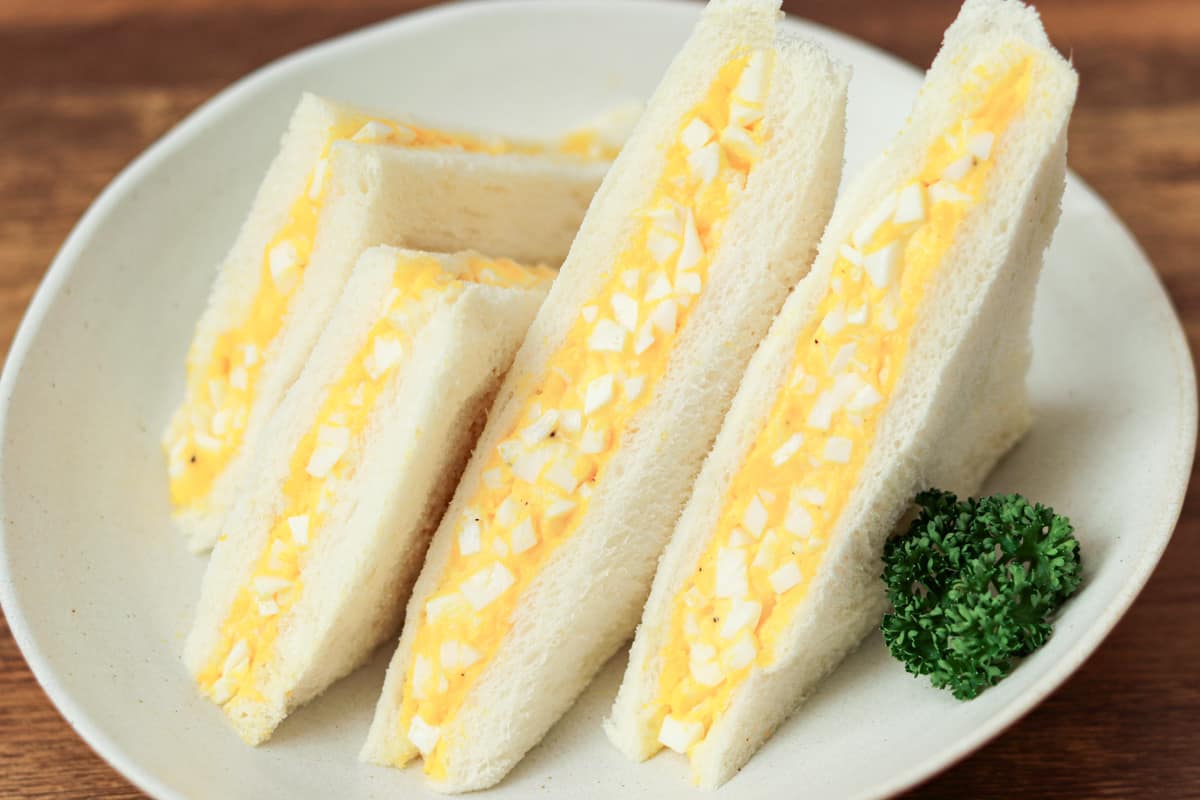
Exploring shokupan
Shokupan bread is the most familiar type of bread for Japanese people. It has a soft and fluffy texture, similar to marshmallows when eaten plain. Due to its delicate texture, it has become a staple in Japan as sandwich bread, allowing the flavors of the fillings to be enjoyed more directly.
A standard loaf measures 4.92 inches (12.5cm) square, and pre-sliced loaves are available in packs containing 4, 5, 6, 8, 10, or 12 slices. Loaves with more than 8 slices are suitable for sandwiches. The thickness varies depending on the number of slices:
- 4 slices: 1.23 inches (3.1cm)
- 5 slices: 1 inch (2.5cm)
- 6 slices: ⅘ inch (2cm)
- 8 slices (for sandwiches): ⅗ inch (1.5cm)
- 10 slices (for sandwiches): ½ inch (1.2cm)
- 12 slices (for sandwiches): ⅖ inch (1cm)
For an authentic Japanese tamago sando, you need to find shokupan of a suitable thickness or cut 4-6 slices to half their thickness. When using an unsliced loaf of shokupan, cut it to a thickness of approximately ⅖-⅗ inches (1-1.5cm). If thickness is not a concern, you can also use 4-6 slices of bread as they are.
Additionally, you can substitute shokupan with alternatives like hot dog buns (which are also sometimes found in Japan). However, to fully appreciate the creamy texture of the eggs, shokupan is still recommended. Be sure to check your local Asian market.
Fillings options
Tamago sando is typically made with only boiled eggs as the filling, but you can also add other ingredients according to your preference. In Japan, the following ingredients are sometimes used along with eggs:
- Ham slices
- Lettuce
- Sliced cheese
- Teriyaki chicken
While this recipe doesn't include these additional ingredients, if you are making a large batch of tamago sando at once, it is highly recommended to include them to enjoy a variety of tastes and textures.
Tips to make more delicious
This Japanese sandwich can achieve a smooth and enjoyable texture with just a bit of extra effort. The key to achieving delicious results is to prepare the boiled eggs by separating the yolks from the whites.
The yolks contribute to the flavor and smoothness, while the whites add an accent to the texture. Mix the yolks thoroughly with seasoning for a few minutes until they become creamy. As for the whites, finely chop them into pieces about ⅕ inch (5-6mm) in size.
By combining these together again, you can maintain a smooth consistency while preserving the texture of the whites in perfect balance. There is a significant difference in mouthfeel compared to cooking them together without separation, so I encourage you to give it a try.
Another tamago sando
In Japan, 'tamago sando' often refers to a dish like this recipe, but there is also a sandwich with the exact same name. This sandwich includes a large piece of Tamagoyaki (Japanese rolled omelet) or Dashimaki Tamago (Japanese rolled omelet with dashi broth) as the filling.
While both sandwiches use eggs, the flavors are quite distinct. These sandwiches are also popular in Japan, so give them a try if you are curious.

Ingredients
- 3 eggs
- 4 slices shokupan (Japanese milk bread) (Use shokupan loaves cut into 8, 10, or 12 slices. If using loaves cut into 4, 5, or 6 slices, cut each slice in half horizontally beforehand. When using an unsliced loaf, slice it to a thickness of approximately ⅖-⅗ inches (1-1.5cm).)
- 0.35 oz butter (for the shokupan)
Seasonings:
- ½ tsp sugar
- ⅙ tsp salt
- ⅙ tsp ground black pepper
- 2 Tbsp Japanese mayonnaise (such as Kewpie Mayo, 0.53 oz/15 g per 1 Tbsp)
Step-by-step instructions
🕒 Total 25 mins
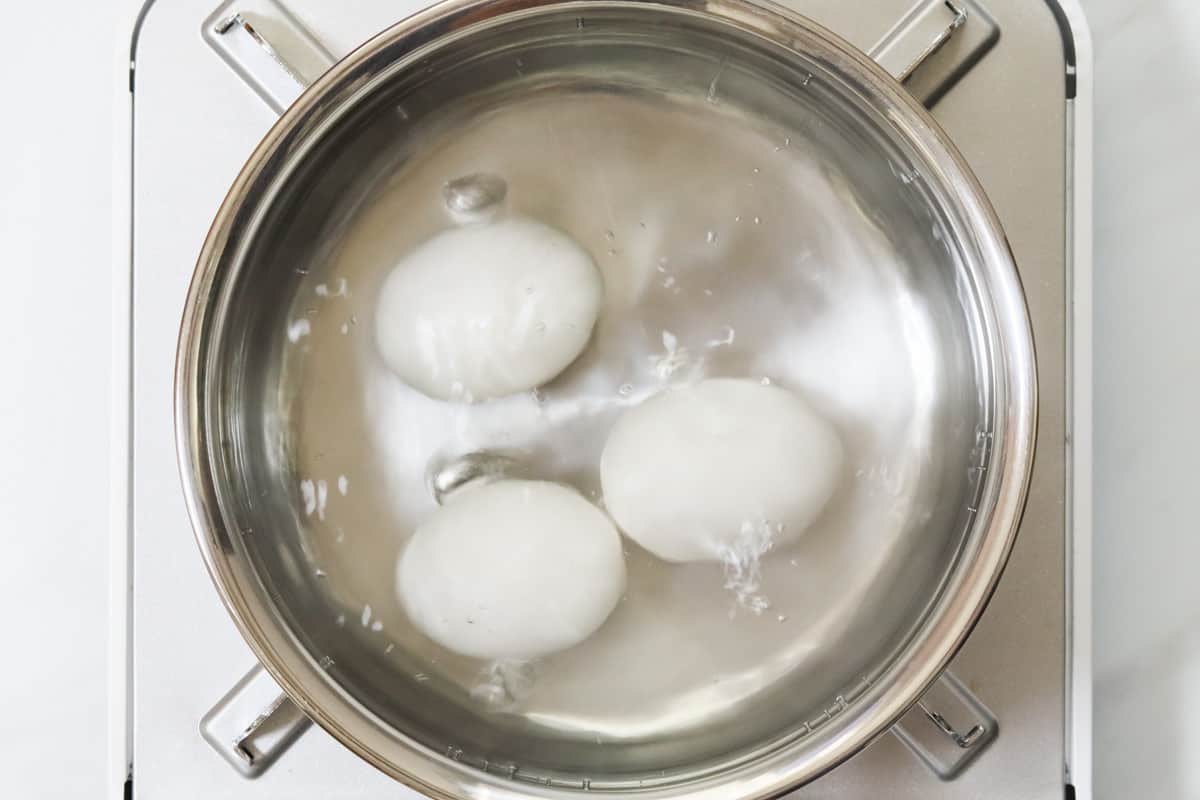
Step 1
Fill a large pot with plenty of water and bring it to a boil. Once boiling, reduce the heat to medium and carefully add eggs one at a time using a ladle. Boil them for 12 minutes.
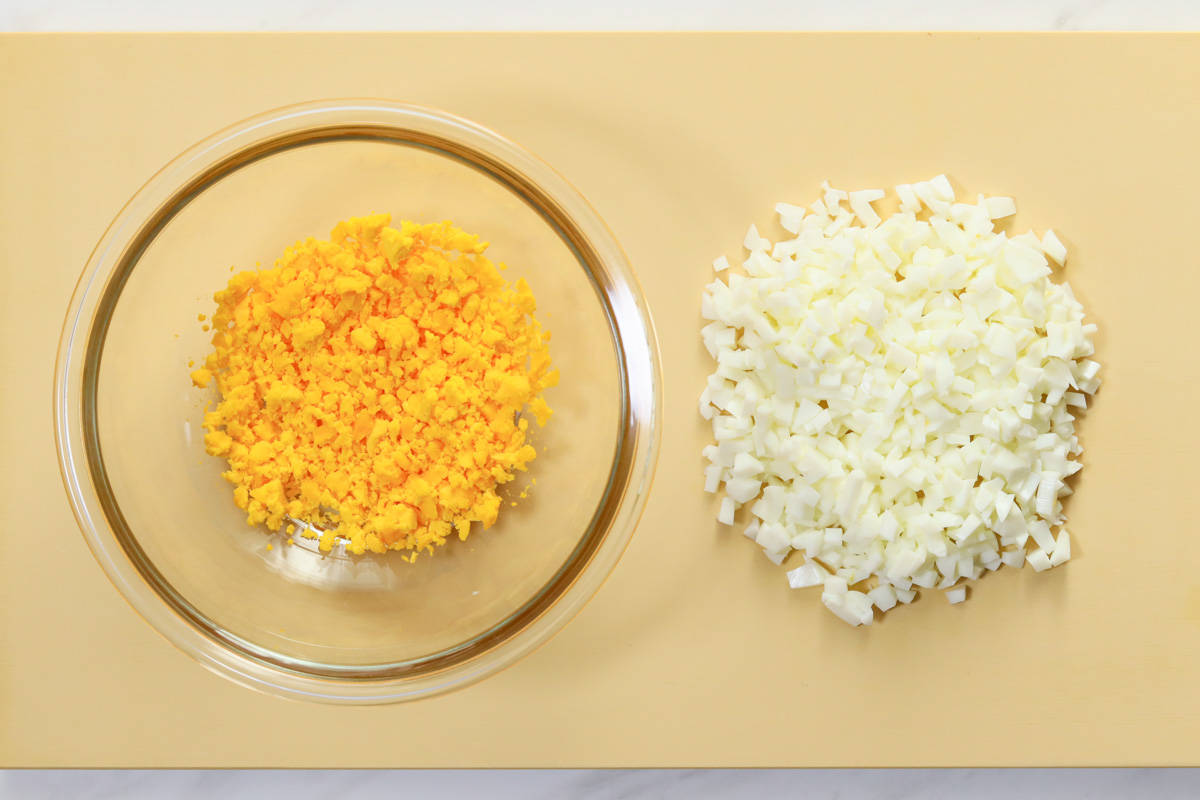
Step 2
Remove the boiled eggs from the pot, cool them under running water, and then peel them before cutting them in half to separate the yolks and whites. Mash the yolks in a bowl using a spoon or spatula, and dice the whites into cubes about ⅕ inch (5-6mm) in size.
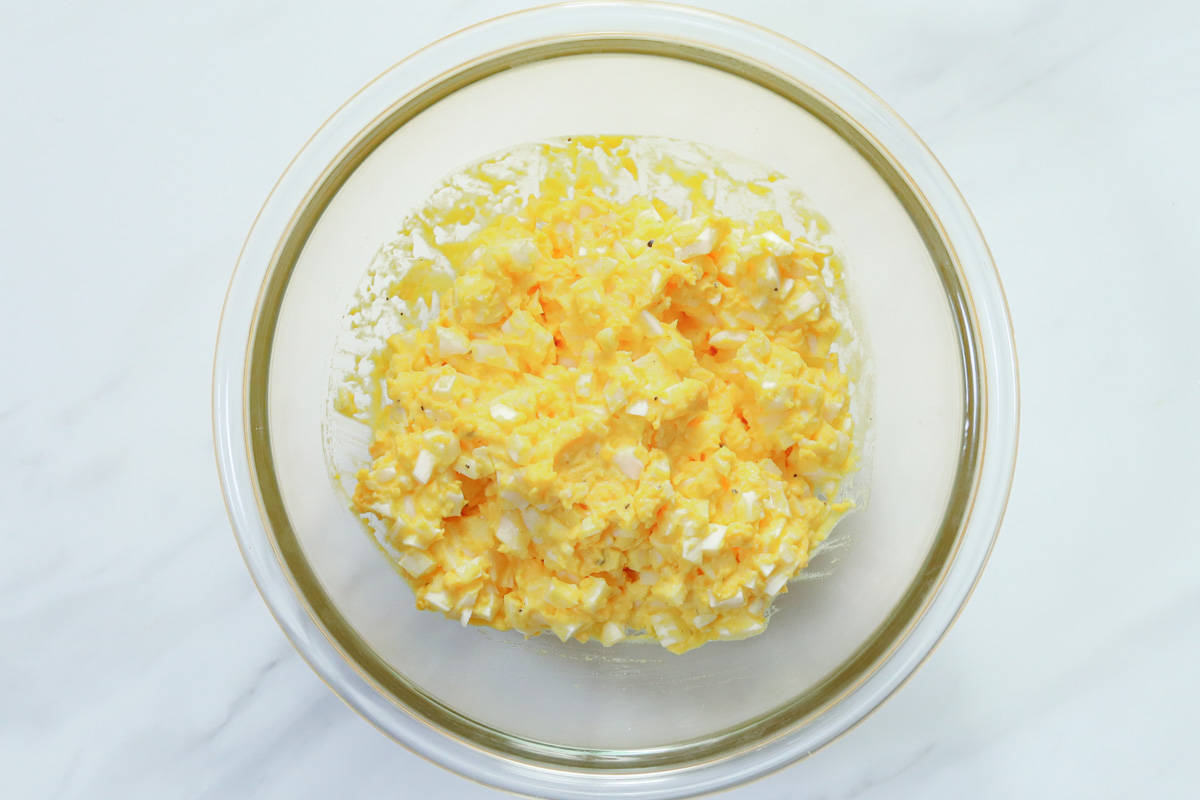
Step 3
Add seasonings (sugar, salt, pepper, and Japanese mayonnaise) to the bowl, and mix thoroughly with the yolks until the mixture reaches a creamy consistency, which should take a few minutes. Next, add the chopped whites and mix everything together.
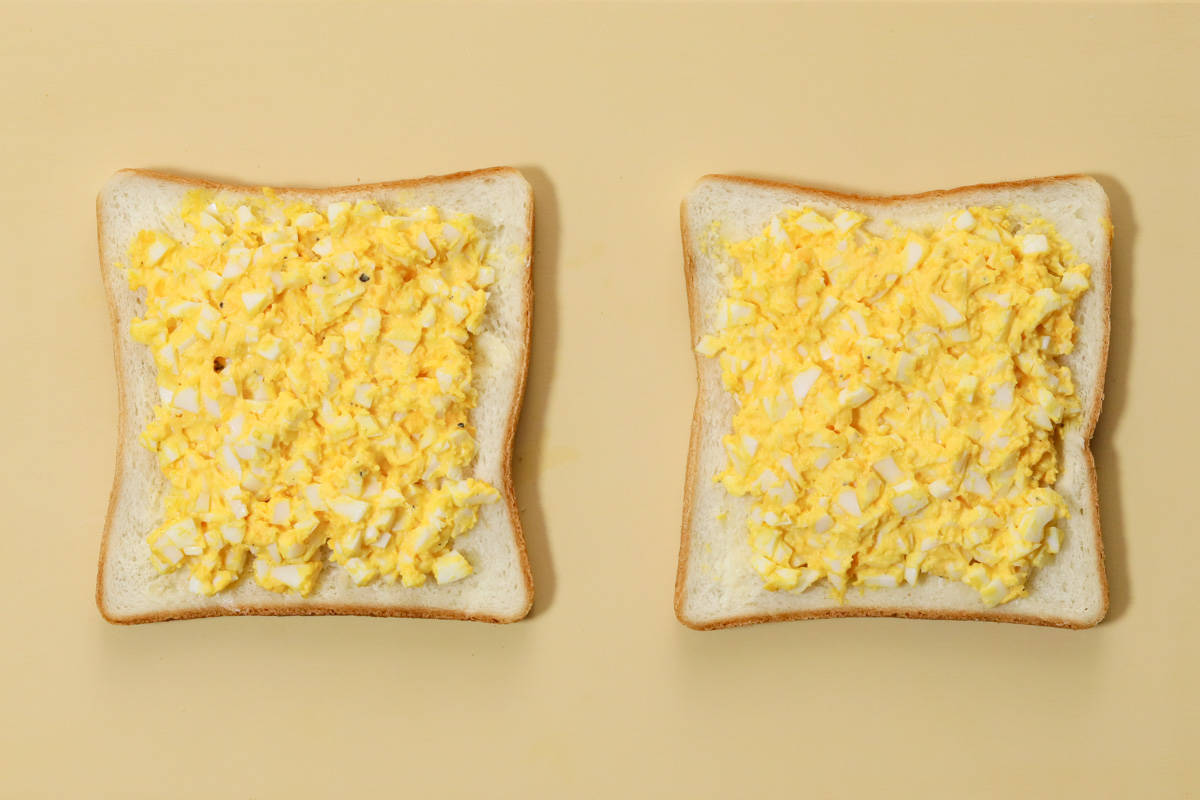
Step 4
Spread butter on one side of each slice of shokupan. Evenly spread the egg mixture on the buttered side of one slice, then sandwich it with another slice of shokupan buttered on one side. Repeat this process to make the desired number of tamago sando.
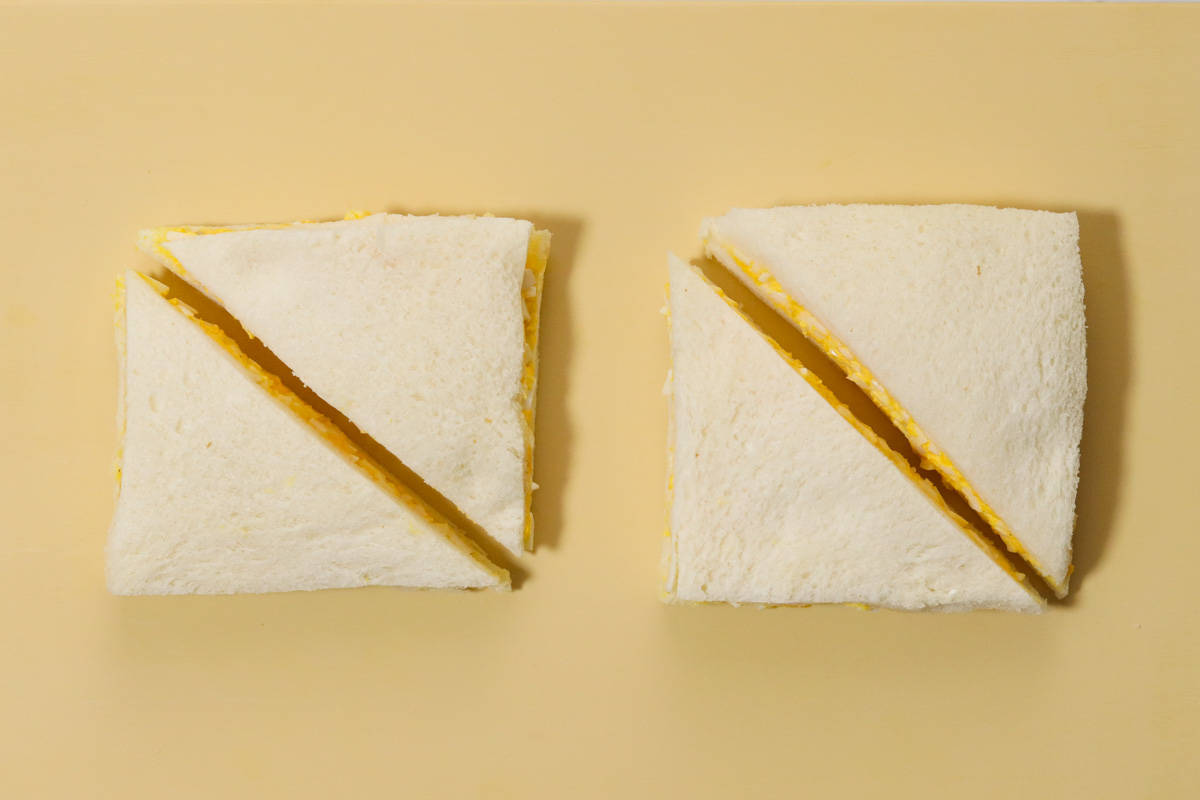
Step 5
Cut off the crusts and slice the shokupan diagonally or horizontally. For cleaner cuts, it is recommended to wipe the knife with a paper towel between cuts.
To Store
You can store it in the refrigerator for up to a day.
Transforming leftover shokupan crusts
While the leftover shokupan crusts can be enjoyed as they are, you can also transform them into a sweet treat. They are easy to make, so try this recipe: "Sweet Shokupan Crust Snacks."
Recipe Card

Tamago Sando (Japanese Egg Sandwich)
Ingredients
- 3 eggs
- 4 slices shokupan (Japanese milk bread) (Use shokupan loaves cut into 8, 10, or 12 slices. If using loaves cut into 4, 5, or 6 slices, cut each slice in half horizontally beforehand. When using an unsliced loaf, slice it to a thickness of approximately ⅖-⅗ inches (1-1.5cm).)
- 0.35 oz butter (for the shokupan)
Seasonings:
- ½ tsp sugar
- ⅙ tsp salt
- ⅙ tsp ground black pepper
- 2 Tbsp Japanese mayonnaise (such as Kewpie Mayo, 0.53 oz/15 g per 1 Tbsp)
Instructions
- Fill a large pot with plenty of water and bring it to a boil. Once boiling, reduce the heat to medium and carefully add eggs one at a time using a ladle. Boil them for 12 minutes.
- Remove the boiled eggs from the pot, cool them under running water, and then peel them before cutting them in half to separate the yolks and whites. Mash the yolks in a bowl using a spoon or spatula, and dice the whites into cubes about ⅕ inch (5-6mm) in size.
- Add seasonings (sugar, salt, pepper, and Japanese mayonnaise) to the bowl, and mix thoroughly with the yolks until the mixture reaches a creamy consistency, which should take a few minutes. Next, add the chopped whites and mix everything together.
- Spread butter on one side of each slice of shokupan. Evenly spread the egg mixture on the buttered side of one slice, then sandwich it with another slice of shokupan buttered on one side. Repeat this process to make the desired number of tamago sando.
- Cut off the crusts and slice the shokupan diagonally or horizontally. For cleaner cuts, it is recommended to wipe the knife with a paper towel between cuts.
Notes
- You can store it in the refrigerator for up to a day.
- While the leftover shokupan crusts can be enjoyed as they are, you can also transform them into a sweet treat. They are easy to make, so try this recipe: "Sweet Shokupan Crust Snacks."




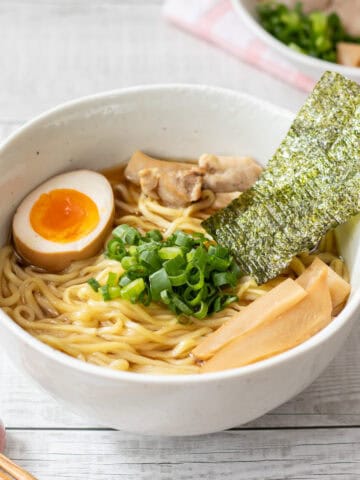
Leave a Reply